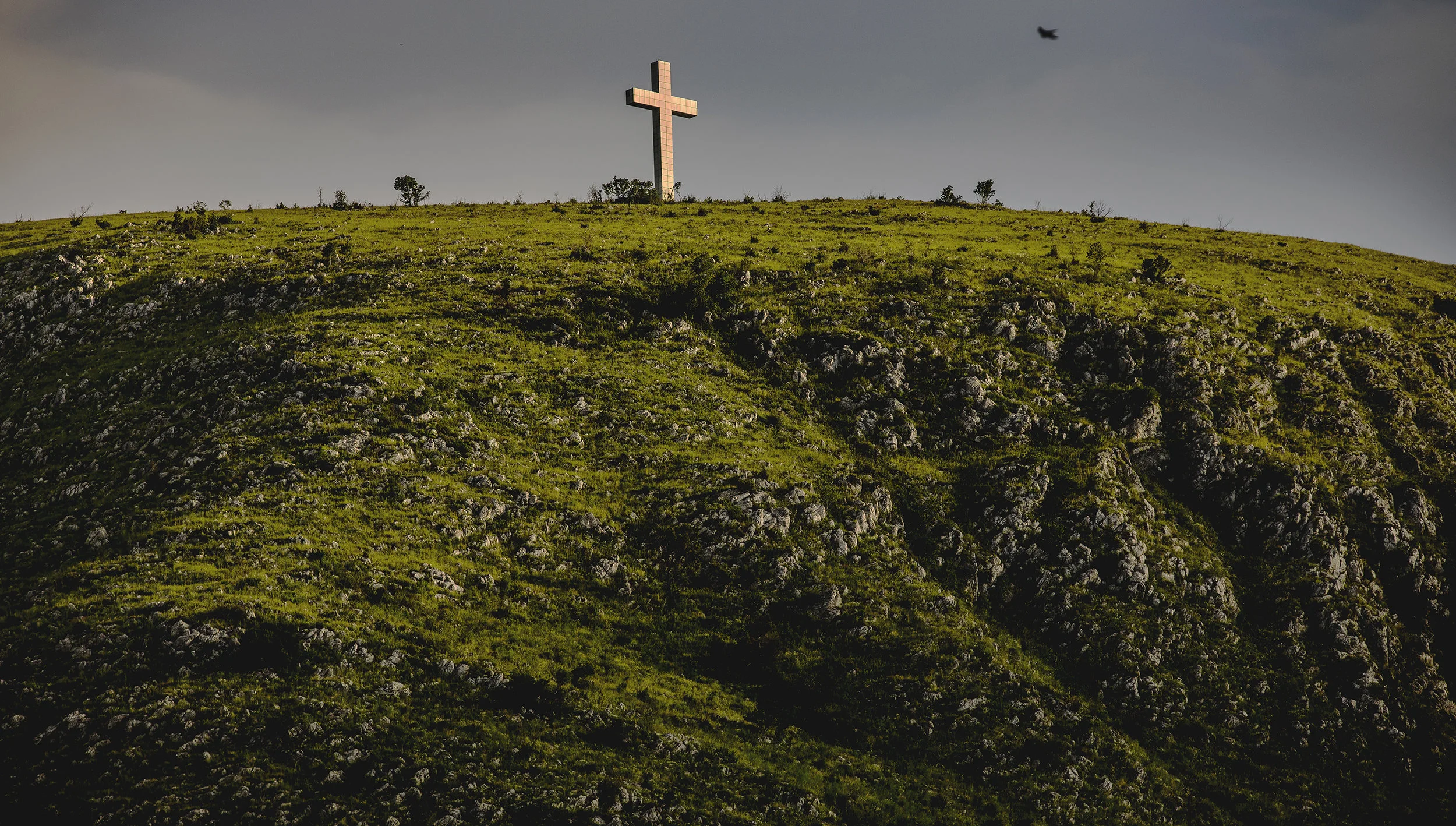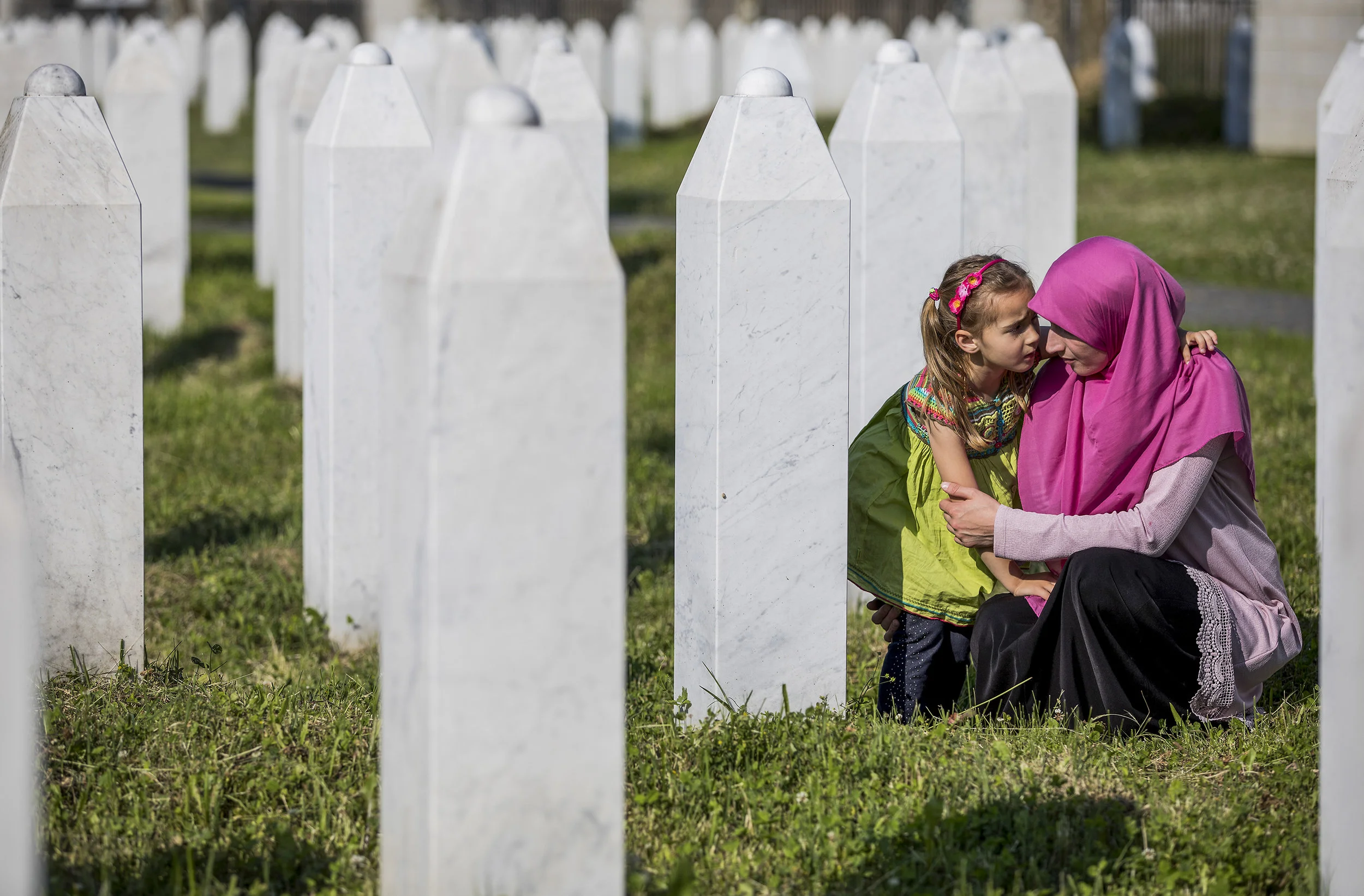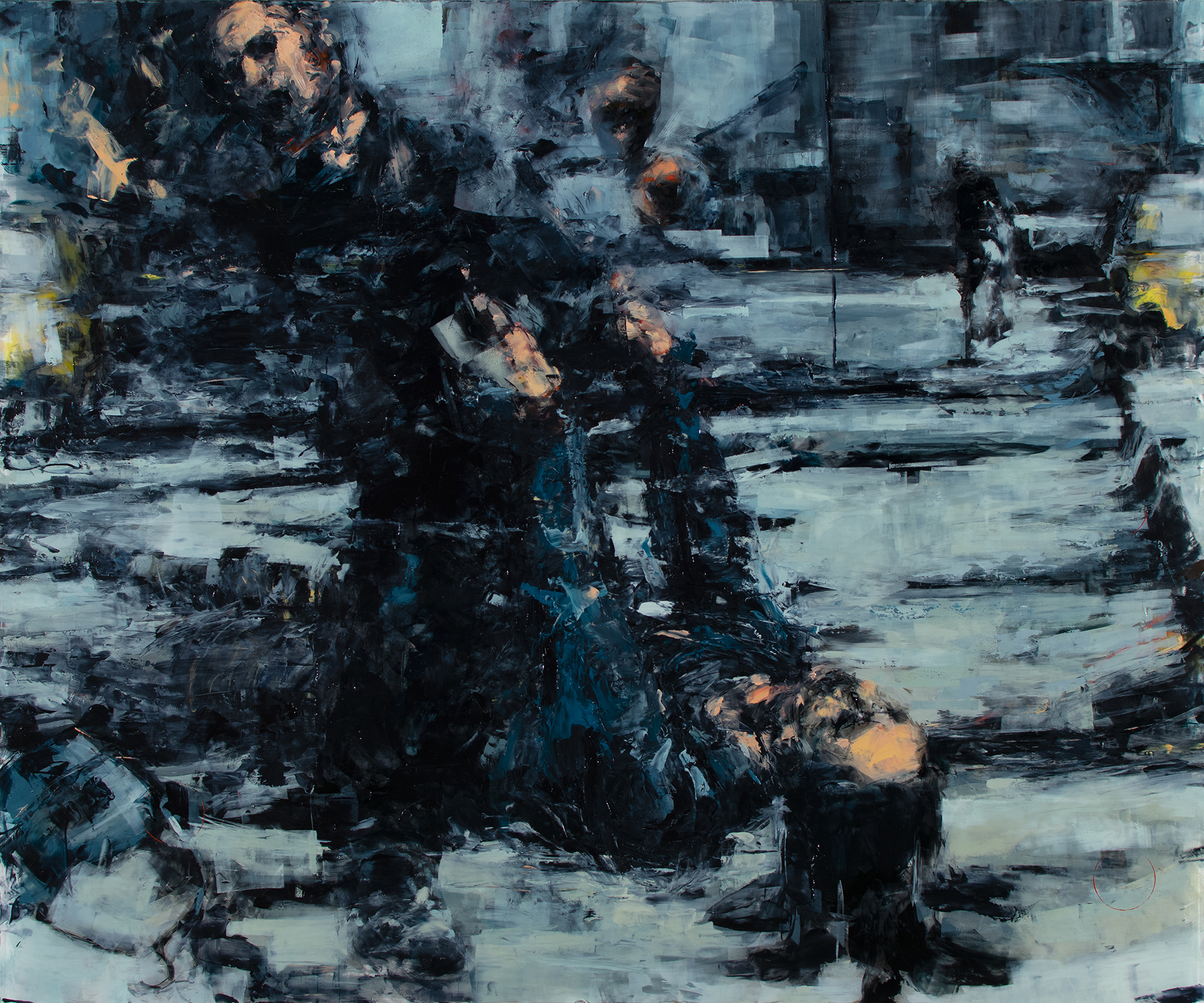Downing Museum Exhibition Proposal
Responding to Bosnia
work by Photojournalist James Kenney and Artist Yvonne Petkus
Statement of Intent:
Responding to Bosnia is a proposal to exhibit work by photojournalist James Kenney and artist Yvonne Petkus together in the special exhibitions room of the Downing Museum. We are aware that this space is currently scheduled through 2019 and are interested in consideration for your 2020 season as available.
We, Kenney and Petkus, were fortunate to conduct research together in Bosnia and Herzegovina through the 2017 Zuheir Sofia Endowed International Faculty Seminar (ZSEIFS) fellowship program. We were both deeply affected by this experience and have found that similar content and underlying meanings have emerged in the resulting work.
The ZSEIFS experience, which included three months of joint study followed by in-country research and exploration, was intense, beautiful, emotional, at some times difficult, and at all times supremely interesting and inspiring.
For Kenney, his original intention was to document the social/cultural effects of a war that devastated Bosnia and Herzegovina more than 20 years ago. What he found was a country and a people still in mourning – even shock – trying to return to some version of normalcy. He found that though the wounded landscape has largely covered up its scars, the people are healing much more slowly. The sense that the war still isn’t completely over can still be seen in weary faces and distant stares, as well as shrapnel-pitted buildings dotting the roadways. The war is commemorated in art, catalogued in centers that identify human remains, memorialized in cemeteries solely dedicated to genocide victims, and heard in the terrible stories told over and over of torture, rape, and killing, opening up old wounds in the attempt to come to some kind of understanding, or at least some measure of peace. The hope of overcoming the past, and battling the continued ethnic tensions and distrust exacerbated by deep-rooted governmental corruption, comes in the next generation’s ability to find a balance between remembering the past and moving on from it. Through his photographs, Kenney explores these complex issues and their outcomes, with the goal of documenting each moment captured with sensitivity and honesty.
Petkus is a process-based artist who uses painting to explore ideas of struggle, perseverance, and the residues of trauma. She works from a place of questioning, of searching for resonances, sieving what she sees, thinks, and researches through the physical, additive and subtractive act of painting. The method is a sculptural use of mark-making to develop imagery and content, responding to specific inputs as a way of exploring potentially larger meanings. Sources include sketches, photos, interviews, and notes, including those gathered during the 2017 ZSEIFS fellowship in Bosnia. While Petkus has not experienced war, a complicated family background, personally and ancestrally, has led her to explore ideas of struggle and survival, vulnerability and strength. She has found these issues to be part of the Bosnian experience, a country still in flux, where the residues of trauma and conflict are still so present. Studying Bosnia has expanded avenues for investigating representations of the residues of violence that remain embedded historically and in individual lives. Her intention is to address these concerns expressively in painting while providing a space for contemplation, reflection, and understanding. Ultimately, this work comes from a firm belief in the capacity that art has to reflect and push society, to question the way that meaning is assigned, and to shift the way that we see.
Through our individual ways in, we both acknowledge the most difficult and most human of concerns that live with us all just under the skin – but also the persistence and strength that we each witnessed in the place and people of complicated, beautiful Bosnia. The opportunity to share this work with Bowling Green, and particularly with the significant Bowling Green Bosnian population, is of great interest to us.
The images we have included are intended to give an idea of the bodies of work that we intend to exhibit, with additional pieces in progress that we could potentially include. The works will be curated toward their best representation throughout the space, highlighting commonalities while allowing viewers two points of entry into this complex subject matter.
We also both regularly give lectures (and gallery talks) and would be very interested in doing so here, if that is something of interest to the Museum.
Thank you for your consideration.
Images – James Kenney (click on each image and hover for details)
Images – Yvonne Petkus (click on each image and hover for details)
Resumes:
Artist Statements:
James Kenney
As a photojournalist, my primary goal is to lend a visual voice to those who desire to have their stories told, using light, composition, color, and expression to reveal the human condition. The resulting photographs do not presume to solve complex issues; they are rather striving to raise awareness and engender empathy.
Though photographing abroad allows me to explore diverse cultures, it is the resemblance, the familiar, the common thread, that ultimately inspires me to record the moment – of faith, loss, relationship, isolation, struggle, triumph, love.
Bosnia and Herzegovina presented an unsettling combination of beauty and grief, sometimes within the same photographic frame. I documented a country still struggling to come to terms with its past and its need to heal deep wounds in order to secure a peaceful future.
Yvonne Petkus
As a process-driven artist, I am invested in painting as a physical act of thinking and in mark-making as a living action. I use painting to explore ideas of struggle, the residues of trauma, and forces against the body.
Through a recurring figure held in expressly ambiguous spaces, connotations are able to build as layered sets of actions, challenged through each successive reiteration and formed into open narratives. Each piece is a negotiation, a grasping – a search for meaning.
The underlying mechanism is an acknowledgement, a meditation, on the beauty and horror of the limitations of language. The overarching goal is to use visceral cues and a shifting surface as evidence of the larger human struggle – not in an ideal world but in this world.
Recent works include responses to cultural sources, like the Polish film Ida and the Kavanaugh hearings, as well as to physical, historical, psychological, and visual influences gleaned from time working in both Iceland and Bosnia-Herzegovina.



















